If you own a real Pashmina shawl, then you must consider yourself opportune. It is a luxury and has been a dream possession of royal kings and queens, and nobles of the courts of ancient times. Across all genders, races, nationalities, and cultures, Pashmina was cherished like the rarest asset. In fact, it was a rare asset owing to its acquisition, looks, and price as well. For this reason, Pashmina shawls traveled from narrow lanes of Kashmir to the largest fashion outlets in Europe.
For this reason, Kashmiri artisans too lived like kings. They would be revered all over the world and hence invited to foreign places, especially England and South Africa, where Pashmina gained more acclaim. Kashmiri artisans would train local artisans at these places in embroidery, hand weaving, and other skills. This was especially the treatment given to Pashmina artisans. Everyone would love to hear and learn more about Pashmina, which in turn increased the demand for the product, and honoured its makers, manifold.
Times changed, preferences changed
The acclaim and glory were not long-lived, and times fell hard on the art. The people who lived luxurious lives, the artisans, now began to feel useless in society. Demands for plunged and cheaper copies rose to fame. Fraudulently, traders sold fake Pashmina in the market, which would lose their grace after a couple of washes. This brought a bad name to the entire art of Pashmina and customers stopped buying the same.
Pashmina - the hands behind its making
Pashmina is the fine art of transforming raw Cashmere wool into luxury apparel and accessories. It grows on the underbelly of a rare goat species of Ladakh. The Changthangi goat grows Cashmere over its body as a defense mechanism against the freezing cold the region experiences in winter. The moulting season in late spring and early summer leads the goat to naturally shed this coating, which herders collect and get processed into luxury apparel and wraps. Hence shawls, scarves, sweaters, dresses, and accessories like socks, handkerchiefs, and pocket squares are handcrafted out of it.
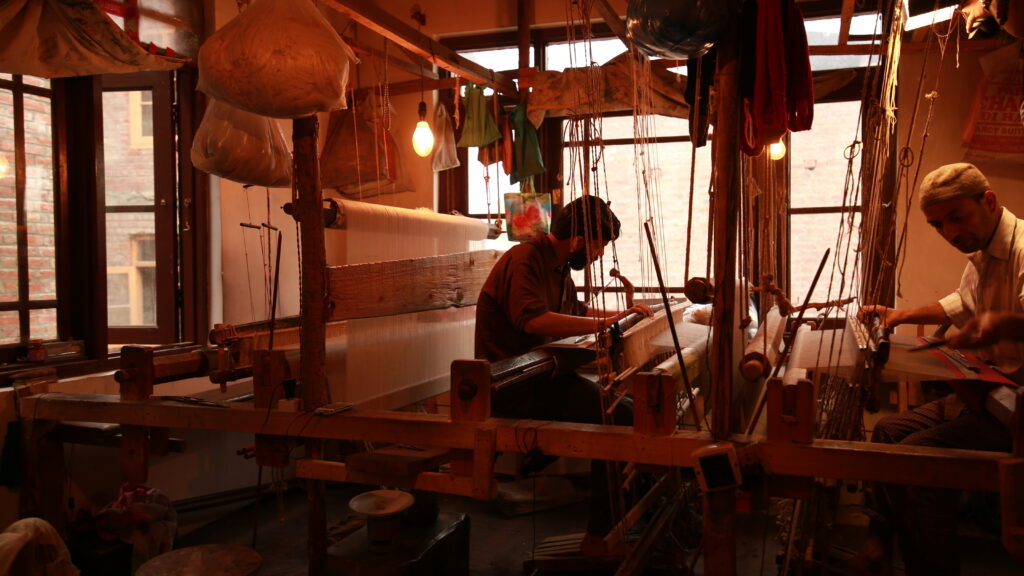
Since the processing is manual, it takes much time to complete. For solid scarves and shawls, 4 to 5 days are enough. But for Kani shawls or a full embroidery Jamawar shawl, craftsmen spend years together. This sometimes proves to be a disadvantage, as customers do not like to wait. And perhaps this was the reason why fraudsters got the opportunity of introducing fake Pashmina shawls in the market, which were made in just a few hours, if not days. We are talking about the products of the power loom.
Power loom, and the death of the original Pashmina
The demand for Pashmina shawls exceeded their supply. However, since every process related to the completion of a shawl was manual, it took months or even years to finish. The only option left for traders to make shawls at a faster pace emerged to be the use of machines. Power looms were introduced in Pashmina. The same shawl handmade in 3 to 4 days, would be made in minutes now. This, although, resulting in more production of Pashmina, diminished its quality multifold.
The shawls are handmade, crafted from Cashmere, whose fibre diameter is just 12-16 microns. This makes the fibre exceptionally fine and delicate. When this fibre was passed through the power loom, the machine strain broke it in seconds. Hence, Cashmere fibre began to be mixed with a strengthening fibre, like silk or nylon and then passed through the machine. This silk or nylon amalgam was treated with a chemical, which consumed the foreign threads, and Cashmere remained. But this chemical-treated Cashmere lost life, and a shawl that would last for a lifetime lasted for a few years. Besides, the chemical didn't always help and some foreign threads remained in a Pashmina shawl, leaving it impure.
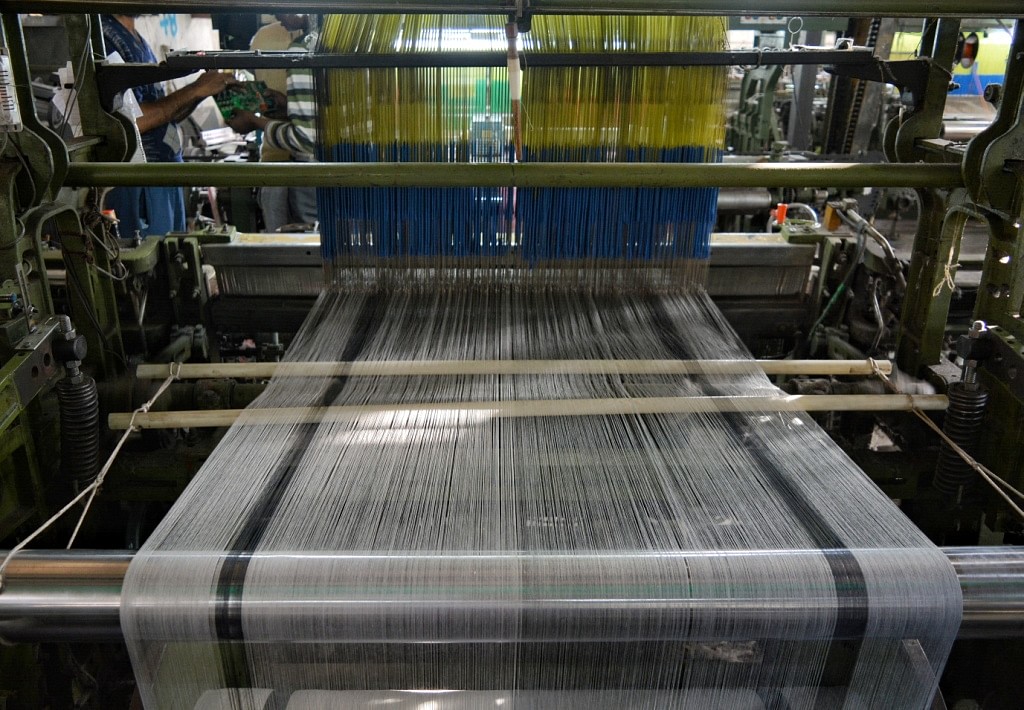
This brought a halt in the entire Pashmina industry, and the art, as well as its artisans, lost respect and demand. Handloom artisans were jobless. Customers went for fake shawls, not knowing the reality of their processing, and handloom artisans suffered brutally at the hands of the power loom.
Also read: Handmade Pashmina vs Machine Made Pashmina - The Difference
Pashmina and its reputation
Not aware of the ground problem, customers concluded that all types of Pashmina shawls are the same, and hence fake. The reason behind this conclusion was that the same shawls that lasted a lifetime withered in a few years. This happened to most of the customers, and the industry experienced a shakeout, while its artisans experienced serious financial issues. Only local Kashmiri women knew real Pashmina makers and shopped directly from them. But on national and international levels, Pashmina shawl demand reduced from half to almost nil. These customers believed that real Pashmina doesn't even exist now.
What is real Pashmina?
Call it authentic, pure, or certified, real is the one made from pure Cashmere, acquired from the Himalayas. The Himalayan ranges house an exotic variety of goats. This goat is called the Changthangi goat. The Changthangi goat sheds its outer coat in its moulting season, which begins in Spring. This wool, after shedding, is collected by herders, who send it for processing to Kashmir.

Processing starts with cleaning the wool and sorting it. Later it is sent for spinning, and then hand weaving takes place. This results in a handcrafted Pashmina shawl, scarf, or wrap, which is real and original. There is no inference of a machine whatsoever. Pure Pashmina is fine, soft, smooth, and immensely warm. This type of shawl has a life of more than 20-25 years.
On the other hand, fake shawls are not as warm. They have an artificially shining surface and last for a few years. These are the same shawls, that are passed through a machine, mixed with foreign strengthening threads, and hence compromised on the basis of quality. Fake shawls are cheap, as there is less quantity of Cashmere in them.
It takes the experience of a person to differentiate between pure and fake Pashminas. Some tests have, however, been devised to check the purity of a shawl. Here are some of them:
Burn Test
Burning a piece from the fringes of a Pashmina should give the same pungent smell that burnt human hair gives. Cashmere is a natural fibre and should smell the same upon catching fire. In addition to this, the ash post-burning should turn into a powdery substance.
Uneven weave of the shawl
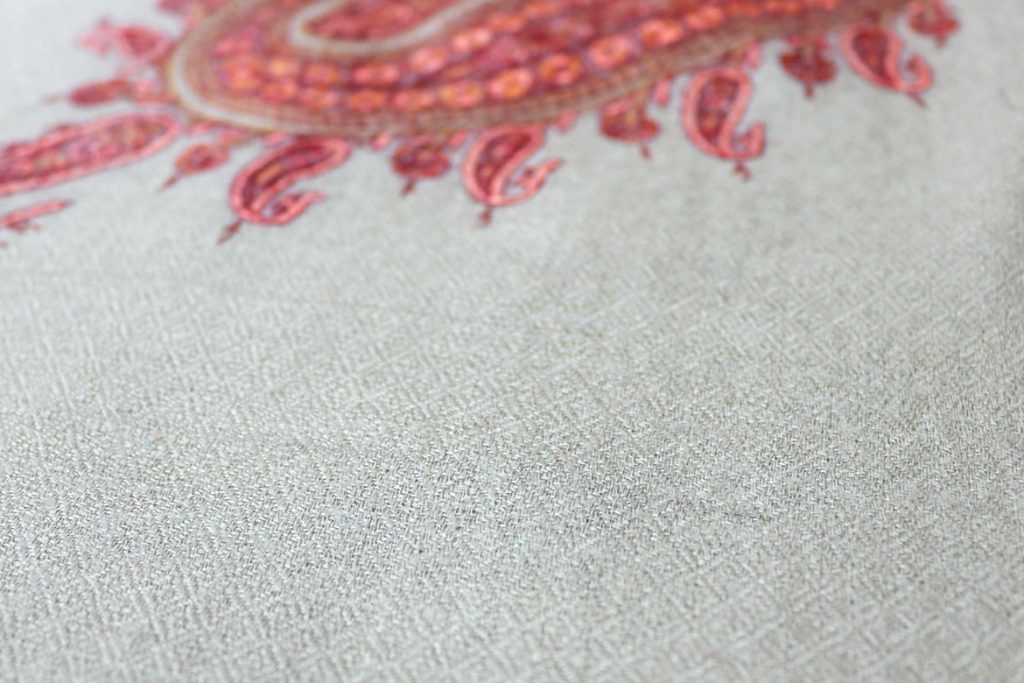
If you hold your real Pashmina shawl high against sunlight or any light source, you will notice an uneven weave, which is natural to human hands. Machine weaves are symmetrical and regular, while handcrafted shawls have irregular weave patterns.
Pilling Test
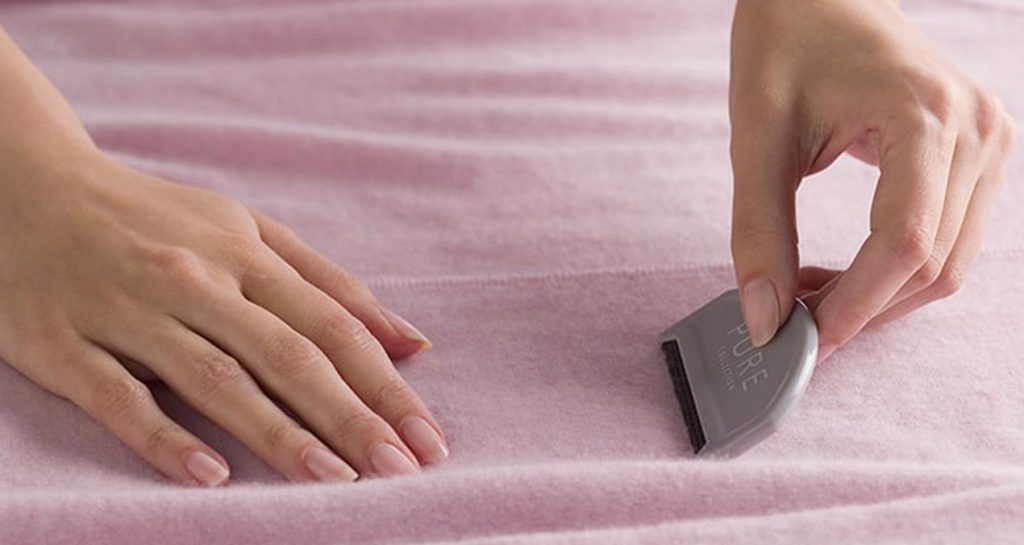
Even though we hate piling in clothes, in Pashmina this is a good sign. Real one will pile. This is because these are crafted from natural fibre, which pills necessarily. But if there is nylon or silk mixed with it, the shawl will never pill at all.
Comfort Test
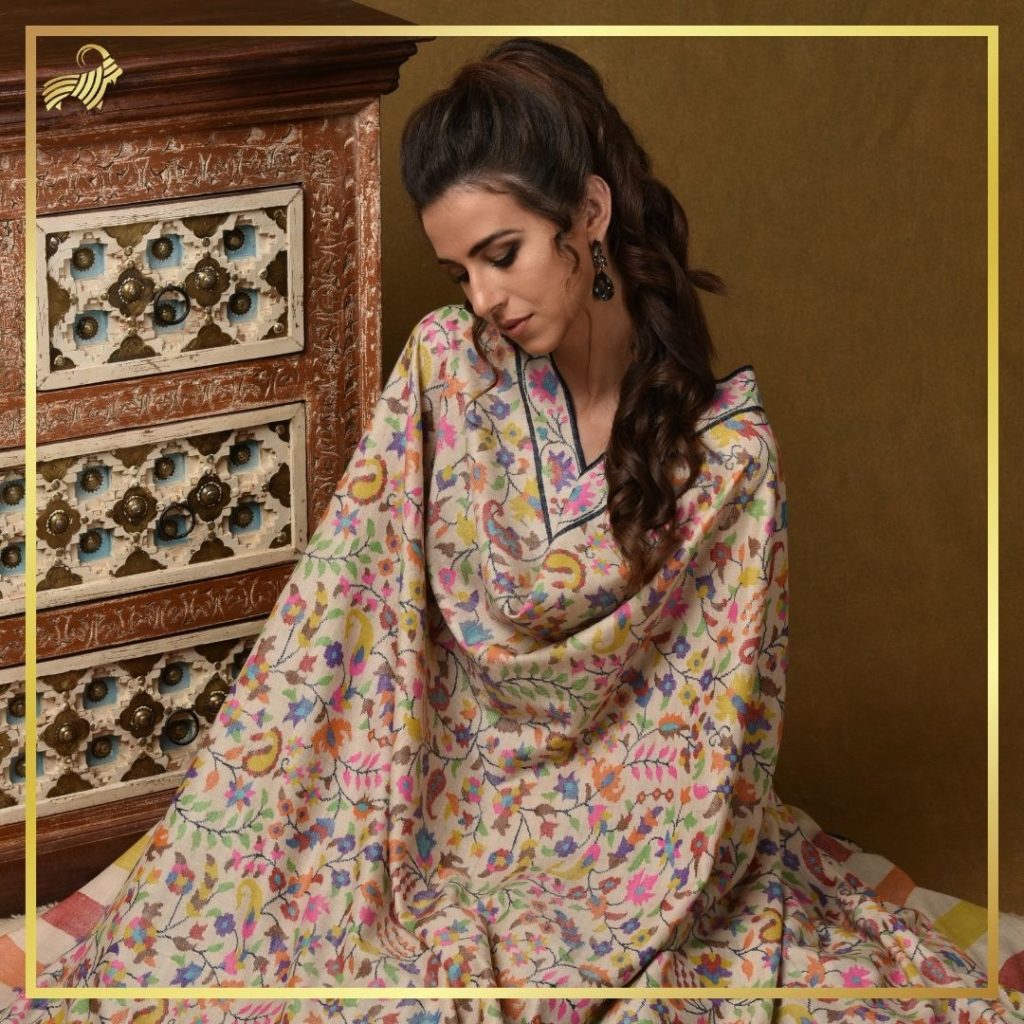
Original, and real Pashmina is comfortable to wear. It doesn't cause itching or rashes.
What is the price of a Real Pashmina shawl?
Real Pashmina is expensive when compared to cheaper, fake copies of the same. The real price of an original Pashmina shawl, however, depends on a number of factors. Some of them are:
Ply
The density of Cashmere fibre used to craft a shawl is called ply. Single-ply Pashmina shawls are those where Cashmere thread is handwoven in its single form. Double-ply, also called two-ply shawls, are those where the Cashmere thread is doubled. This makes the shawl more sturdy and, to some extent, immune against harsh treatment. Two-ply shawls are more expensive. Single-ply shawls are somewhat sheer in texture, exceptionally fine, and delicate.
Yarn count
Yarn count is the count of the meters of yarn spun per gram. The more yarn count, the more quantity of yarn is included in a gram. Hence more yarn count means the shawl is finer and more delicate. A 100-count Pashmina shawl means one gram of the shawl incorporates 100 meters of Cashmere. How soft and gooey would this fibre be?
Fibre thickness
During spinning, if the fibre used is thick, i.e, around 20 microns, the shawl would be less fine, and thicker than usual. This shawl, even though it would be pure Pashmina, is less expensive. If yarn measures 12-15 microns, this shawl would be exceptionally fine and delicate, and hence more expensive.
Weaving Patterns
There isn't just one weaving pattern, but a number of them, which too determine the price of a real Pashmina. Diamond weave shawls are the most expensive, followed by twill and basketweave. Jacquard weave shawls are chosen in solid shawls which are ideal for weddings, gifts, and perfect bridesmaid wear.
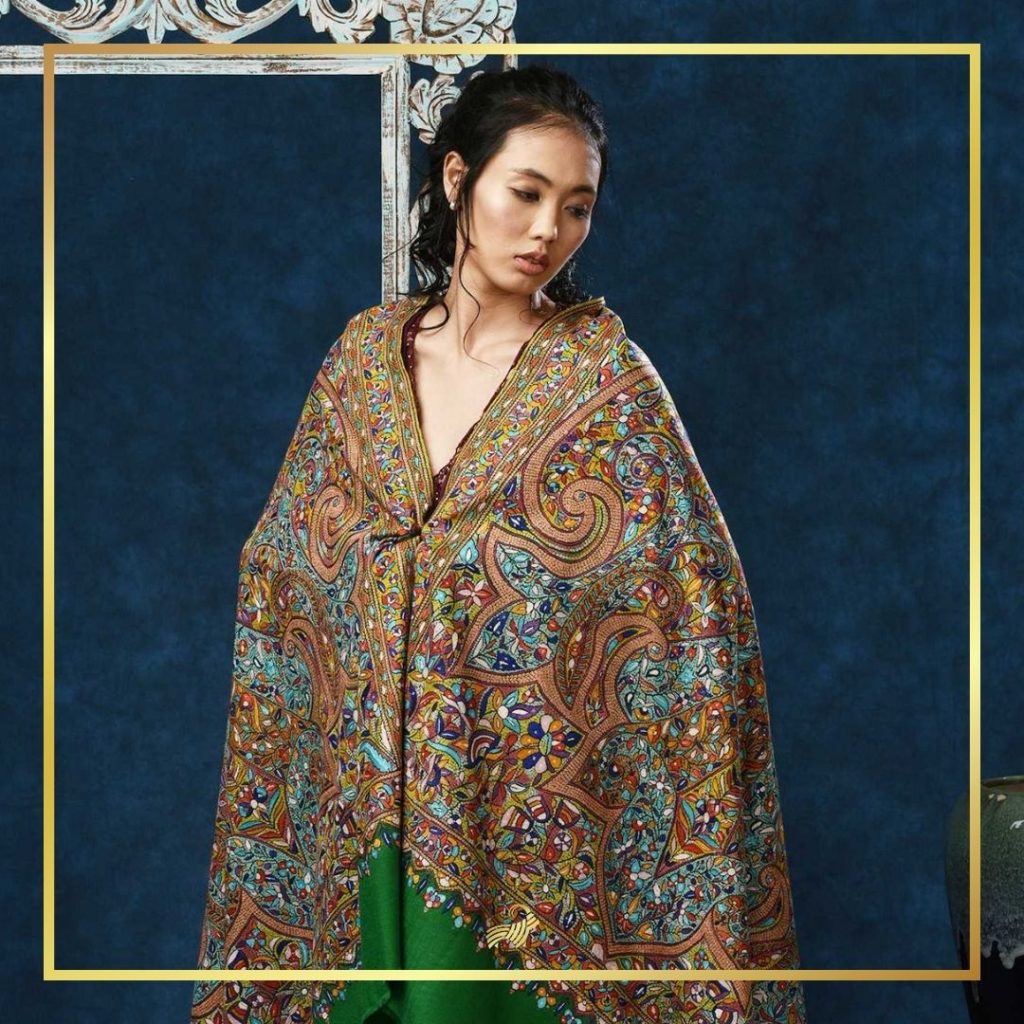
In general, Pashmina shawls in their solid essence would cost around $300, patterned and printed go up to $350, embroidered shawls range from $800 to $10000 or more. The world-popular Kani shawl value ranges from $1200 to $5000 or more. This is just an average. The values might be lesser, or far greater than the above-mentioned.
How much should I pay for Pashmina in India?
The price of a Pashmina in India can vary widely depending on factors such as the quality of the Pashmina wool, the intricacy of the design, the craftsmanship, and the authenticity of the product. Authentic, high-quality Pashmina shawls that are handwoven and made from pure Pashmina wool can range from a few thousand Indian Rupees to several tens of thousands, especially if they are intricately designed or have unique features. It's important to be cautious of extremely low-priced Pashmina products, as they may not be genuine or of good quality. When purchasing a Pashmina in India, it's advisable to do thorough research, buy from reputable sources, and ensure that the product comes with proper certification or labeling to guarantee its authenticity.
Also read: Luxury Gifting | Unique Cashmere Gifts